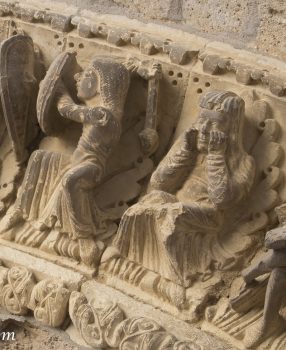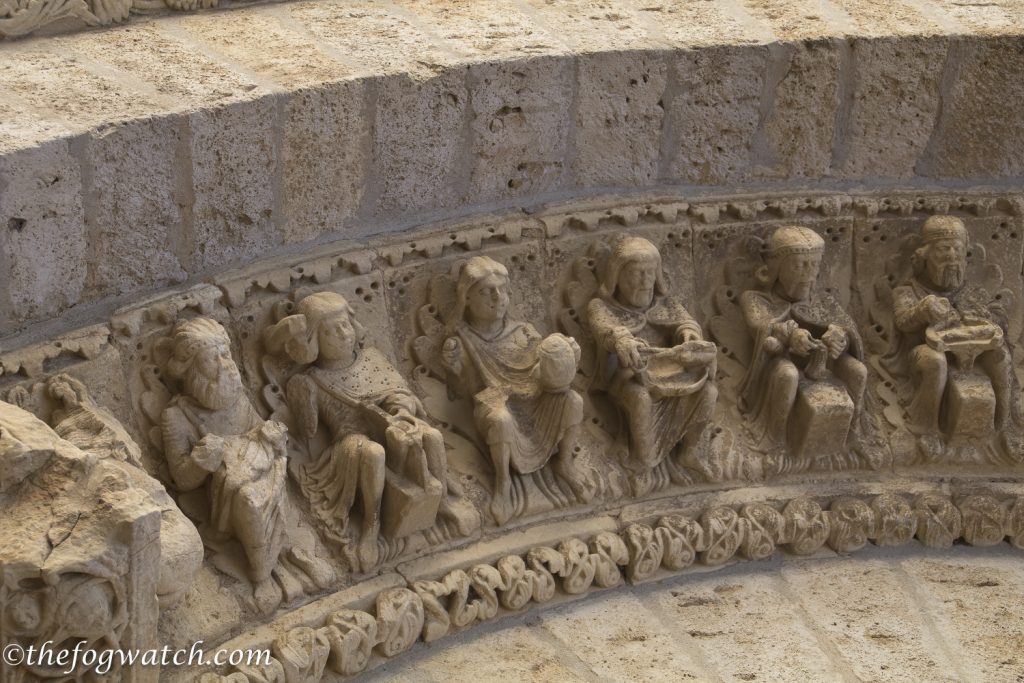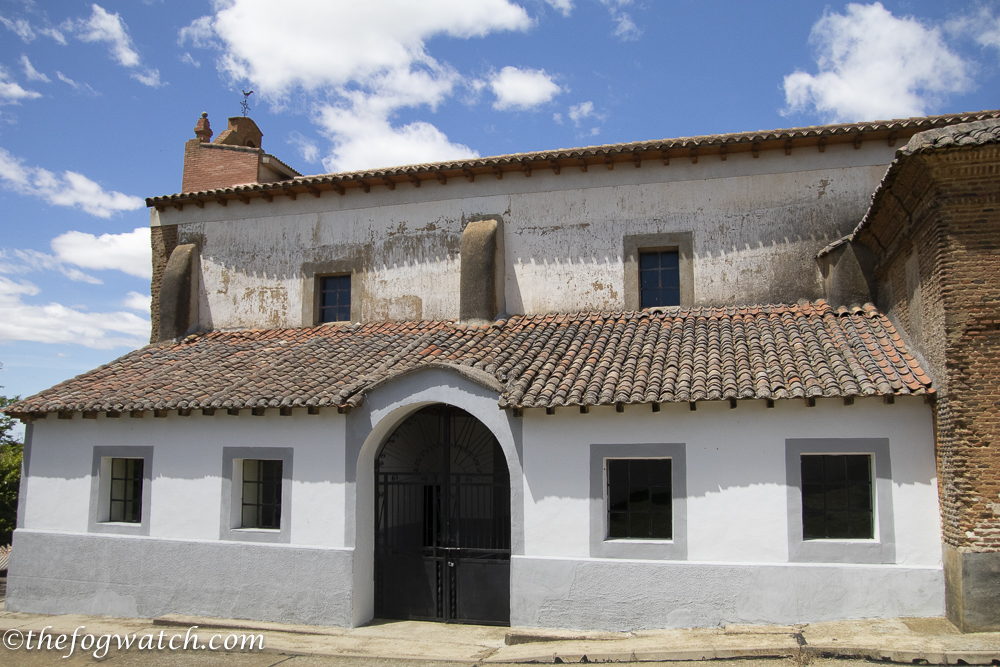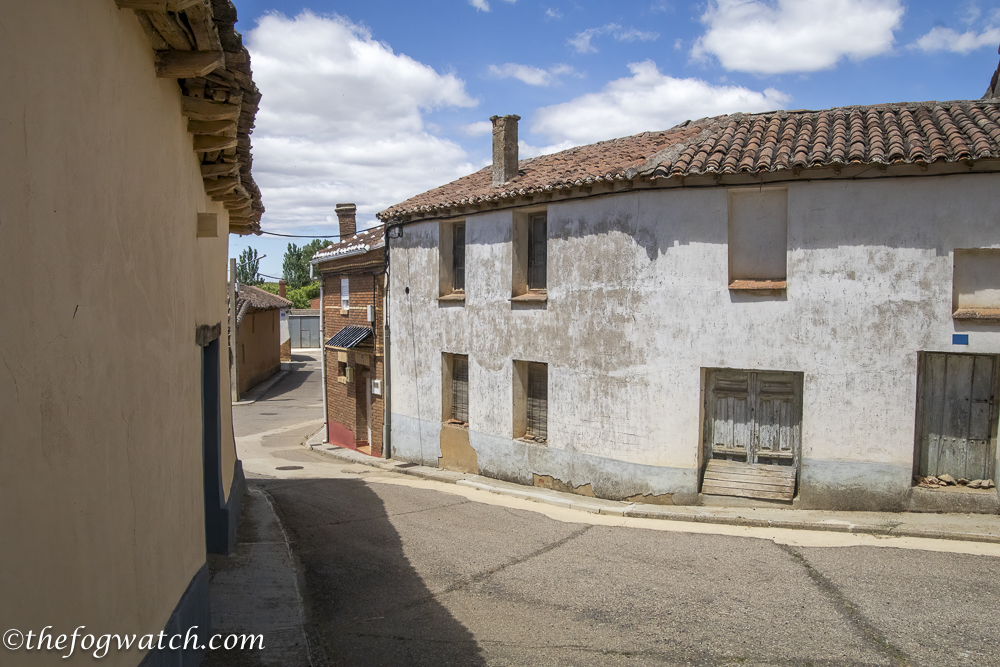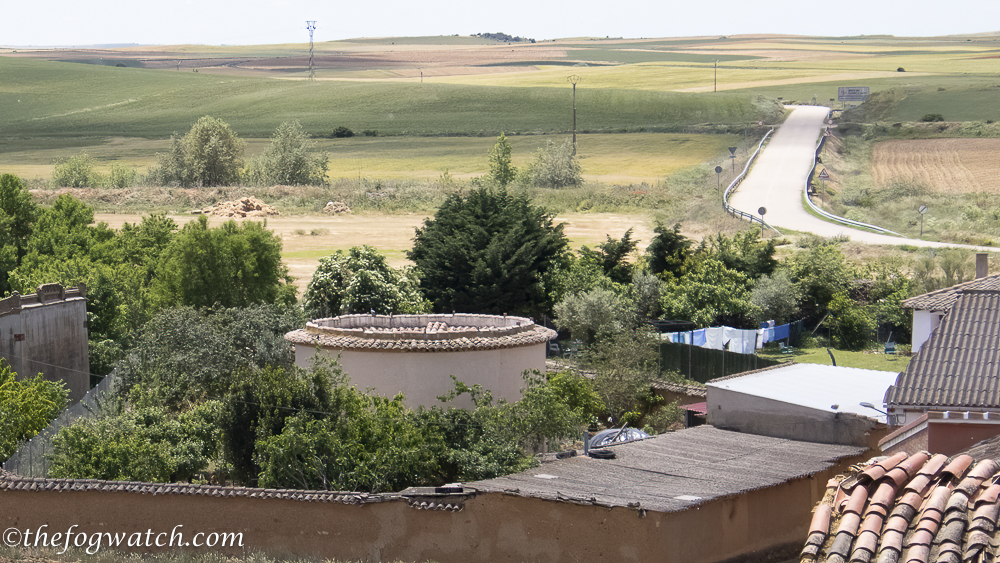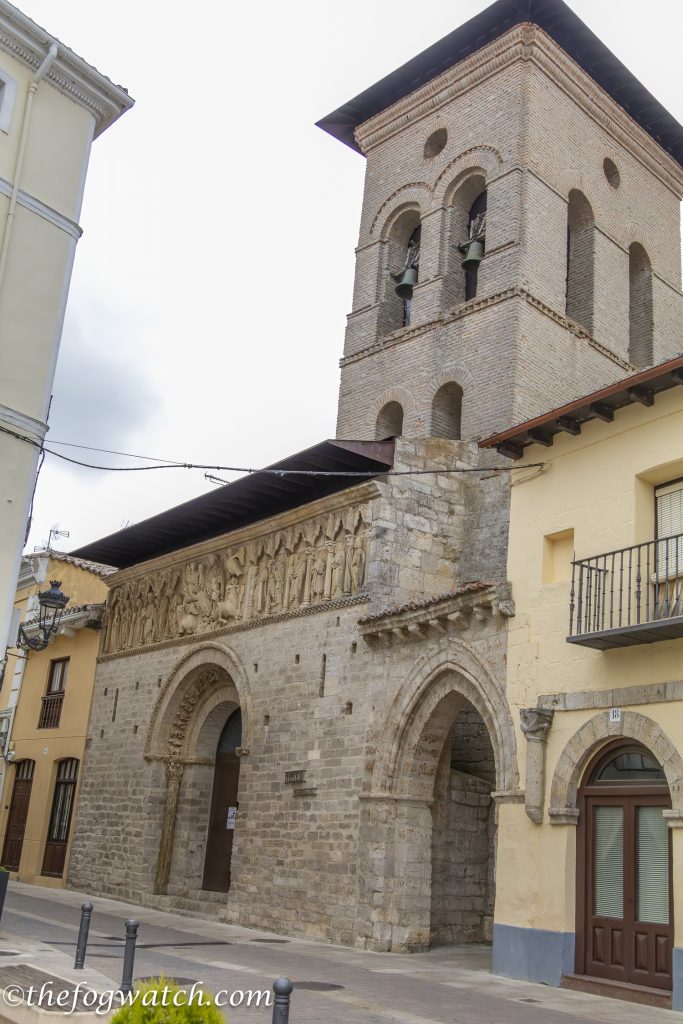
Carrion de los Condes is a fair-sized town and we stayed near the centre, at Hostal La Corte (opposite Santa Maria church). The church is now a museum dedicated to the life of the Virgin Mary. It is a sister museum to the Iglesia de Santiago. And there is a special low price for pilgrims. The vibrant sculptures from the C15th demonstrate great skill in depicting fabric in motion, and the painting of the fabric texture is so detailed that it looks quite realistic.
A timely reminder
The church portico depicts various trades from everyday life, including tailoring, blacksmithing, leatherwork, pottery, music, and so on. To the right, we see a Christian with his long shield fighting a Moor bearing a round shield. The woman sitting between the fighting and politics on one side, and the musician on the other, seems to want to shut out the noise! Indeed, for many pilgrims today, the Camino offers time out from the noise of present-day media life, with news of wars and politics on one side, and a cacophony of sound and bustle on the other, leaving little space for reflection. It can be overwhelming! Sometimes we just want to shut out the world for a while and make space for mental health and perspective. Seeing depictions like this shows that medieval times were not so different from our own.

We had a great conversation over dinner with Anne-Francoise from Bordeaux.
After a restless night, we decided that although the spirit is willing, the flesh is weak. So we taxied to Ledigos, avoiding the 17km without services (although there is often a food van around halfway). The road stretched out long and straight, just like the Roman roads that lie off to the side. Even those are still in use today. To the right, we could see the rolling Cantabrian hills rising from the wheat and barley fields. And on top, you could see inset cuttings where the Celtiberians had built hill enclosures as part of their resistance to the Roman invasion.
Ledigos
In around half an hour, we had completed what would have been a lengthy day’s walk and arrived in Ledigos.
The parish church of Santiago, built in the C17th is the only church on the Camino with all three representations of St James. These are: the apostle; the pilgrim; and the matamoros. Juan Saez de Torrecilla carved the crucifix here
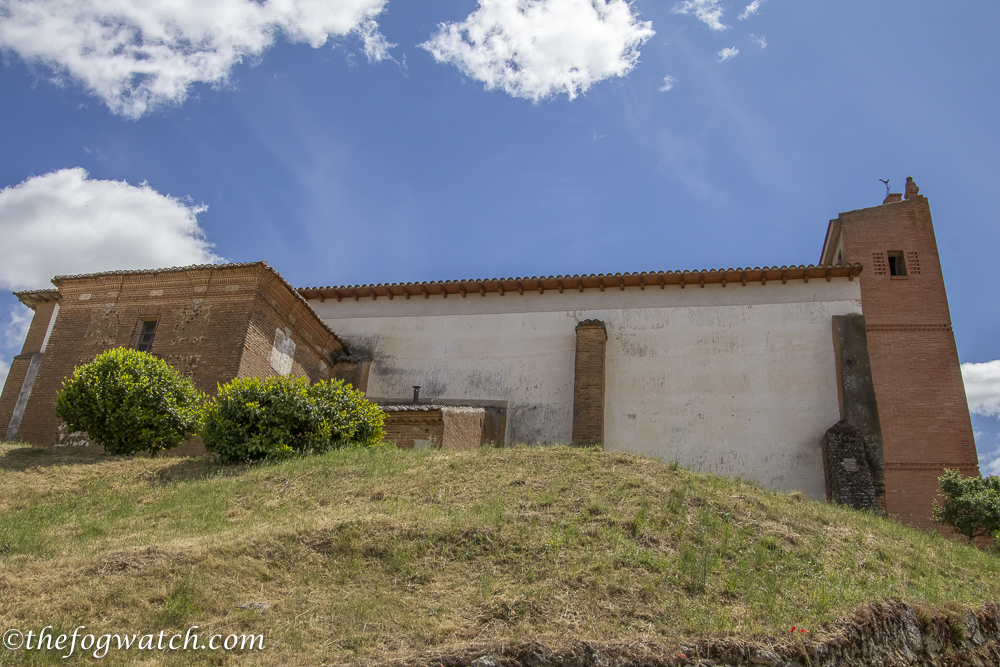
The Iglesia Santiago rests on land that, from the C13th, was the property of the diocese of Santiago de Compostela.
Many houses here are constructed from mudbrick or wattle-and-daub and weatherproofed with paint and whitewash. Many houses seem empty, and at times the village resembled a de Chirico painting. Ledigos is a village in which the buildings reflect the absence of people, rather than their presence. We found the church locked and the surrounding buildings crumbling from neglect.
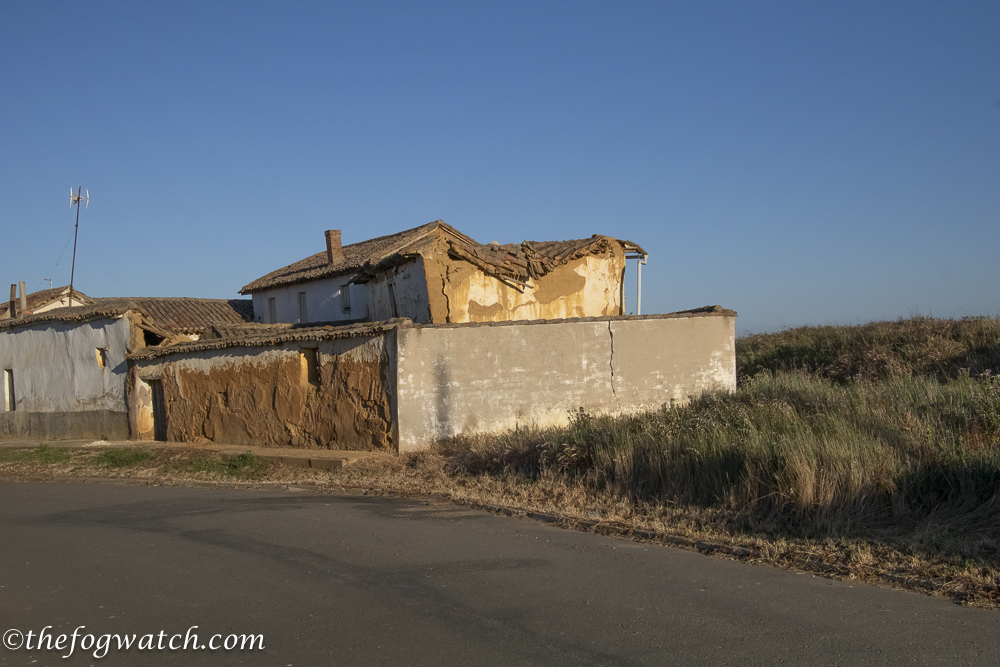
Albergue La Moreña
What a contrast, then, to step into the Albergue La Moreña. it is full of life and a real oasis on the Meseta. The main building was the house of the family matriarch, whose grandson has turned it into an Albergue/hostel.
The place has a washing machine and dryer, as well as plenty of line space. [I probably shouldn’t mention the icy cold shower…] The welcoming atmosphere is complemented by strong wifi and a beautiful garden in which to relax. The decor included a genuine Art Nouveau mirror and many other antiques. This, capped off with friendly staff, makes for a wonderful, welcoming stay — a gem on the Camino.
From our vantage point by the church, we could see one of the many round dovecotes. The locals introduced the doves to keep insects under control, as well as provide a local source of protein.
Tomorrow, we reach Sahagun, the traditional halfway point on the Camino if you started in St Jean Pied de Port.
From a bustling town with its sculptural reminder to seek quiet amid the noise of life and politics, to a small village in the heart of the Meseta with its warm welcome, it is as though we are drawing breath, readying us to step out and reach the halfway marker on the Camino.

